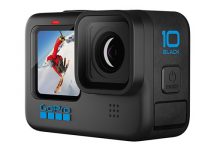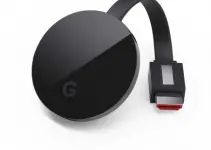I find that whenever a new camera system comes onto the market it is treated with a degree of skepticism. Will a new manufacturer be able to build something that can compete with the long-established competition? Will it live up the promises of the advertising blurbs? Will the features be enough to entice users away from the tried and tested cameras?
These doubts are magnified when the camera in question, Kinefitiny, seems to be squarely aimed at the much-desired Red market whose users are fiercely loyal.
Let’s have a look at what the system Kinefinity have to offer with Carl Yates of ProAV TV.
This is the first video in what promises to be a series with future episodes going into more detail about each camera model. It is worth noting up top, as is made clear, that ProAV who made this video, have a commercial relationship with Kinefinity; they sell their kit on their site. That doesn’t change any of the info here, but it is worth keeping in mind as you watch.
The system breaks down into 2 main parts – the Kinefinity bodies and their add-ons. There are 3 bodies available: the Kinefinity Terra 4K, the Kinefinity Mavo and the Kinefinity Mavo LF.
The bodies are all the same size and shape which is part of what makes this a well thought-out, integrated modular system. You can share accessories, rigs, media etc. between the different models. This gives you swap-ability and an easy upgrade path for the future of your camera.
The biggest differences between the models, aside from the color schemes, are the sensor sizes and the recording specs. The Terra 4k is S35 and as expected, 4K. The Mavo records up to 6k with an S35 sensor and the Mavo LF records 6K but from a full-frame sensor.
The Kine-Mount is a lens-mount system that is quick and simple to swap, giving you the option to use a variety of lenses. This is a key selling point of the Kinefinity system as it makes switching lens mounts as quick and easy as switching lenses.
There are 3 main lens mount options, EF, PL and Sony E and within each of those, there are a few options. These are not adapters but lens mounts, the kind you have to choose at the purchase point with a RED and you are then stuck with. Each user will probably have a good idea of which lenses they most often use and as such the best mount to buy, but knowing that you can change your mind anytime, or adapt your camera per project is exciting.
Within the various lens-mount options are 2 stand-outs – The Enhancer Mount and the Electronic ND. The Enhancer mount for EF and PL performs much like a Metabones Speedbooster, shrinking the image via built-in glass lensing to create a wider field of view and increasing the power of the lens by a stop of light – very cool.
The Electronic ND mount offers built-in electronic ND, much like the Sony FS5/7 system. Having used that often I can say that the fine control and auto features of Electronic ND are simply fantastic. The Kinefinity Electronic ND mount cannot flip to zero ND tho, so perhaps not ideal all the time.
The Sony E Mounts are more basic due to their short flange distance, they don’t have electronics and as such you will need to use manual lenses. The perfect fit might be the Fujinon MK series. I have used the MK’s on my FS7 and they are great lenses – but they are not cheap.
The Expansion Modules are the next essential part of your buying process. There is a Side-grip and the KineBack i/o module.
The Side-grip is a handle that offers full control of the camera and a record button. This will be an essential module for run-and-gun shooting. It also has a battery compartment that can power the whole camera using a KineBat which is similar to Sony BP batteries.
The KineBack module has all the input and output options that you would hope to find on a professional level cinema camera: SDI, Sync, TimeCode and XLR’s. The base module has a built-in microphone for scratch audio and a 3.5mm port for a top mic but if you want proper audio inputs then you will need the KineBack. It offers 2 XLR’s and decent pre-amps.
There is also a new wireless system in the KineBack that allows full camera control from the Kinefinity iPad App which could be fantastic for various tricky shooting situations. The KineBack also provides the mount for V-Lock batteries. Any will do but again, Kinefinity offer their own-brand.
Recording Media for the Kinefinity cameras, shared between all 3 bodies, are 7mm SSD drives and while any off-the-shelf 7mm will fit, only the Kinefinity models are recommended. They are available in 500GB and 1TB.
There are plenty of other ports and features to explore on the Kinefinity and if it is a camera that takes your interest then following the ProAV guys seems like a good place to start.
Advertised as an affordable, modular, cinema-camera system the Kinefinity is certainly a bold product. It offers excellent specs and well-designed eco-system. Its promise is of flexibility and ease of expansion and upgrade. Is it affordable? Well, everyone’s budget is different but if you are looking to go modular the Kinefinity is definitely worth considering.
[source: ProAV TV]
Disclaimer: As an Amazon Associate partner and participant in B&H and Adorama Affiliate programmes, we earn a small comission from each purchase made through the affiliate links listed above at no additional cost to you.



